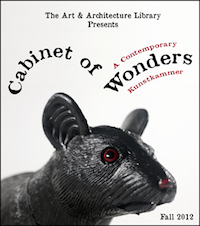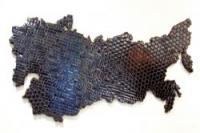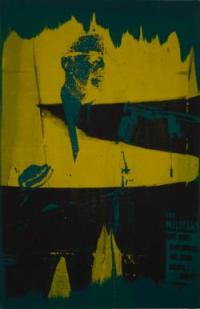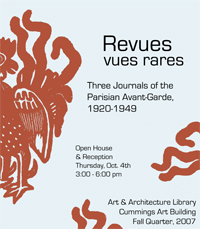CURRENT:
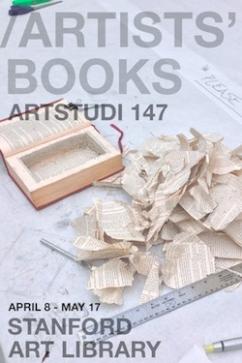 |
In the Winter 2013 quarter, students from Ala Ebtekar's studio course visited the Art & Architecture Library twice to view selections from the library's artists' books collection. The visits helped to inform their own work, providing them with examples of the artists' book form that ranged from the historic to the contemporary, the traditional to the experimental. The works on view in this exhibition are the students' final projects, a set of works that includes altered books, hand-drawn and hand-printed pages, mixed-media boxes, and intricately cut and folded creations.
|
 |
Permanent Rotation: Works from the Locked Stacks In his repeated engagements with the book as media object, the American artist Man Ray (born Emmanual Radnitzky, Philadelphia, 1890–Paris, 1976) extended the Surrealist fascination with ephemerality into the book as media and firmly established the book as an acceptable and readily available medium for modern artists. As Johanna Drucker notes in The Century of Artists’ Books, it is difficult to envision any art movement of the 20th century without also considering its relationship to the development of the artists’ book as a unique form with its own attributes. This is especially true for the “isms:” Expressionism, Futurism, Constructivism, Surrealism, etc. The four co-authored works by Man Ray shown here are closely linked with the Surrealist era, dating from 1925 to 1937. These titles are decidedly collaborative efforts, each a partnership between Man Ray and a noted Surrealist writer: Jean Cocteau, Paul Éluard, and André Breton. They embrace the European tradition of the fine press livre d’artiste, but they also propose a new model for commercially produced artists books that was fully emergent by the 1960s. |
PAST:
Fall 2012-Winter 2013
Fall 2012
 |
Permanent Rotation: Works from the Locked Stacks Alexandre Du Sommerard’s multivolume work Les arts au moyen âge was his final curatorial project. Begun in 1838, its publication continued until 1846, four years after his death. The text portion of the work is a discussion of his collection and its context, as well as a general overview of medieval art and architectural history. The ten plate volumes--here bound into four larger volumes--represent a vast range of decorative objects (from the Musée de Cluny collection when possible) and architecture using lithography and chromolithography, techniques that were still fairly new in the 1840s. Du Sommerard’s aim was to create glittering verisimilitude, and the effect is extraordinary: marble reliefs seem to leap off the page; mirrors seem almost to reflect. [Read more.] |
Spring 2012
| This is the second presentation of chairs created by students in John Edmark's ART 262 course, "The Chair." Participants include Matthew Blum, Matthew Crowley, Jaimee Erickson, Justin Fraga, Mariel Lanas, Bianca Morales, Nick Streets, and Song Toh. | |
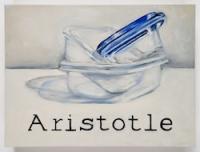  |
The paintings Juliet is the Sun and Aristotle’s Containers enter into teasing dialogue with each other as they examine the possibility or impossibility of a construction of metaphor that has a finite framework. In Aristotle’s tidy, logical explication of metaphor, relationships fit into nesting categories, like a Russian nesting doll, or as here, in Ziploc containers. Initially, in setting out to represent these categories visually, I imagined images within images, but I soon became concerned with the materiality of the containers themselves, as well as the idea of containment. A contained metaphor cannot be messy; that is, it cannot bleed into other realms, nor suggest any kind of ellipsis or continuation. It must “lock” into place, be sealed against infectious intrusion. Still, it must be transparent and “plastic,” metaphorically speaking. Each container may be seen within the other, and further containers are invited. [Read more.] Yvette Deas, Spring 2011 |
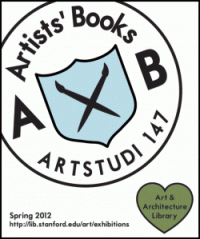 |
In the Winter 2012 quarter, students from Ala Ebtekar's studio course visited the Art & Architecture Library twice to view selections from the library's artists' books collection. The visits helped to inform their own work, providing them with examples of the artist's book form that ranged from the historic to the contemporary, the traditional to the experimental. The works on view in this exhibition are the students' final projects, a set of works that includes altered books, hand-drawn pages, mixed-media boxes, and performance traces. |
 |
Utopie is a sixteen-issue journal (one issue being a double number) that was published by the French ultra-leftist group of the same name in the years leading up to and following the tumultuous events of 1968. In a sense, in its focus upon urban forms and the politics of space, it was an architecture journal, but the group’s collective aim was to move beyond the discipline into a more philosophical and less illustrative realm. Members of the group hailed from the disciplines not only of architecture but of sociology and philosophy (Later, the journal adopted a stance of author anonymity so as to stress pure theory over idiosyncrasy.). Contributors to the journal included the its founder Hubert Tonka, Jean Aubert, Isabelle Auricoste, René Lourau, and, most famously, Jean Baudrillard. [Read more.] |
Winter 2012
 |
In Chinese culture, rubbings are seen as more than mere copies; since each one is unique they are seen as works of art in their own right. There are several names for rubbings in Chinese, but they are commonly referred to as “Black Tigers” (hei laohu 黑老虎) by collectors and connoisseurs because of their color and because of the number of fraudulent rubbings on the market that can “bite” an unsuspecting buyer. The technique of making ink rubbings of stone and metal inscriptions is believed to have originated in China by the Liang Dynasty (502-556 C.E.) but perhaps as early as the Han Dynasty (206 B.C.E-220 C.E.). The works shown in this exhibition are all rubbings taken from stelae, vertical stone monuments usually engraved with writings. |
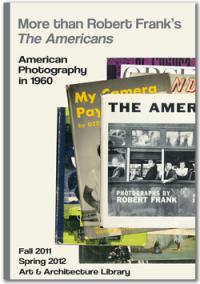 |
Subject of the major traveling exhibition, “Looking In: Robert Frank’s The Americans,” and unanimously acknowledged today as a masterpiece of photobook publishing, Robert Frank’s The Americans occupies a privileged position in the history of photography. The communal adulation that Frank’s book now receives justly celebrates this masterwork of picture making, editing, and sequencing. The 506 page catalog for the 2009 “Looking In” exhibition is a scholar’s delight of detail on Frank and the The Americans. Yet the sum effect of this recent attention may actually diminish our ability to perceive the book’s relative position within the larger culture of American photography at the time of its appearance in January 1960. We assume that the considerable influence of Frank’s The Americans today was also broadly shared in 1960, that the book’s impact was immediate and overshadowed all else in American photographic culture. Actually, while The Americans was a bombshell in some quarters, it caused barely a stir in others. The range of photographic practices under consideration by American photographers in the late 1950s and early 1960s was remarkably diverse. It is this array of practice, and the possible role of The Americans within that array, which is the subject of this exhibition. [Read more] |
Fall 2011
 |
In 2010 the Stanford University Libraries purchased the archives of Helen Mayer and Newton Harrison. Within the 170 linear feet of boxes lie the records of four decades of production, from the earliest works of the 1970s to the works-in-progress of the past few years. Materials include documentary photographs and slides, audio tapes, correspondence, notebooks, blueprints, financial records, grant proposals, newspaper clippings, exhibition catalogs, and computer equipment.
The items on display in the four exhibition cases represent a small fraction of the archive. Drawn from the records pertaining to four separate projects, they provide a glimpse of the Harrisons’ working processes and the environment in which each project was conceived and created. The Lagoon Cycle: 1974-84 |
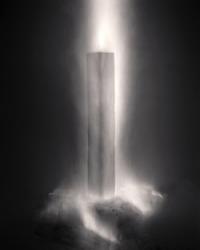 |
Summer 2011
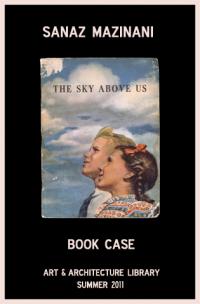 |
Sanaz Mazinani undertook her series Book Case (2004-2007) as a response to the looting of archives and museums in Baghdad at the start of the war in Iraq. Artifacts and written records were disappearing, and most if not all were irreplaceable. In her own studio, Mazinani had been collecting books she had found on the street or otherwise abandoned. They were not rare books—certainly not the recorded history of a nation—but they had their own hazy histories nonetheless, as works of literature, as aesthetic objects, and as bearers of unknown provenance. The tremendous loss of material culture in Iraq was much more urgent than the loss of any single copy of any single mass-produced publication, but still, to Mazinani, there was something both foreboding and enlightening about an abandoned book. She began creating images of the covers of the books she collected, making them larger than life-size in order to reveal new details and heighten their objective presence. |
Spring 2011
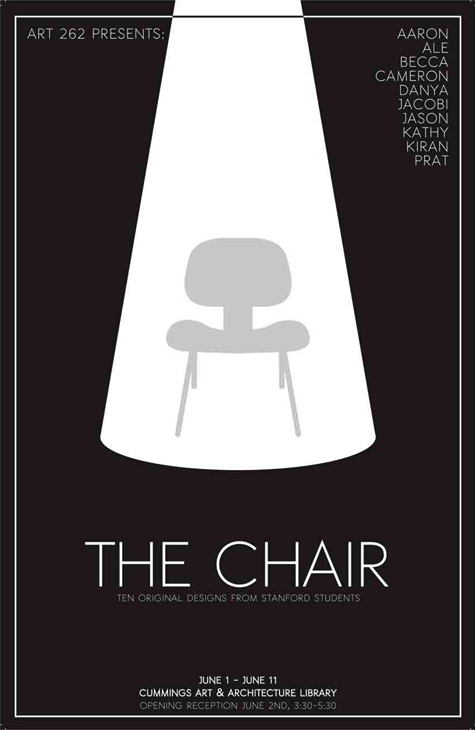 |
Fall 2010
Summer 2010
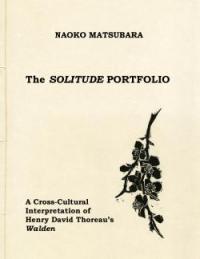 |
Now a resident of Oakville, Ontario, the woodcut artist Naoko Matsubara (b. 1937) was born on the island of Shikoku in Japan and was raised in the Shinto tradition. She trained in the fine arts in both Japan and the United States, first coming to the U.S. as a Fulbright scholar in 1960 and staying to teach at the Pratt Institute and the University of Rhode Island. Not long after producing the Solitude portfolio, Matsubara moved to Canada, where she has continued to produce woodcuts and illustrated books. Her works are in the collections of numerous museums, including the Philadelphia Museum of the Art, the Art Institute of Chicago, the British Museum, and the Tokyo National Museum of Modern Art. Matsubara’s artistic influences include traditional Japanese prints (17th–20th-century ukiyo-e prints being the most well known in the West) as well as—especially due to her studio assistantship in the 1960s with German illustrator Fritz Eichenberg—the stark woodcuts of German Expressionism. Matsubara was selected to illustrate the 1971 Aquarius Press edition of Henry David Thoreau’s fifth chapter of Walden because, according to the editors, her “philosophy of life and language of artistic expression exemplify the same forceful individuality and inner strength of the Thoreau text.” All of the prints from the portfolio are on display, along with excerpts from Thoreau’s chapter. |
Spring 2010
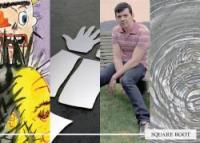 |
The MFA Thesis Exhibition is an annual presentation of the Department of Art & Art History's graduating visual artists. This year, the students have extended their exhibition, Square Root, into the Art & Architecture Library, each of the four artists filling a case in the Reading Room with materials related to their work on view in the Thomas Welton Stanford Art Gallery. The materials are a mix of preparatory sketches, inspirational materials, journal entries, and finished pieces--all helping to reveal the very personal steps involved in creating a cohesive body of work. The artists represented in the show are Jeremiah Barber, Jamil Hellu, Juan Luna-Avin and Armando Miguélez. |
Winter-Spring 2010
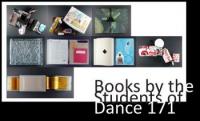 |
During the Fall 2009 quarter, the students of Dance 171: Conversing Across Dance History (led by visiting artist Ralph Lemon and Professor Janice Ross) visited the Art & Architecture Library in order to view a selection of artists' books from the Art Locked Stacks collection. One of the students' culminating assignments was to create books (or book-like objects) that distilled their class experiences in some way. Inspired by the range of bindings, formats, and themes they saw during their library visit, they created a unique and highly personal set of works. |
Late Fall 2009-Winter 2010
Late Summer-Early Fall 2009
Spring 2009
Fall-Winter 2008-2009
Late Summer-Fall 2008
 |
Winter-Spring 2008
Fall 2007 Winter-Spring 2008
← Back to the Art & Architecture Library home page


